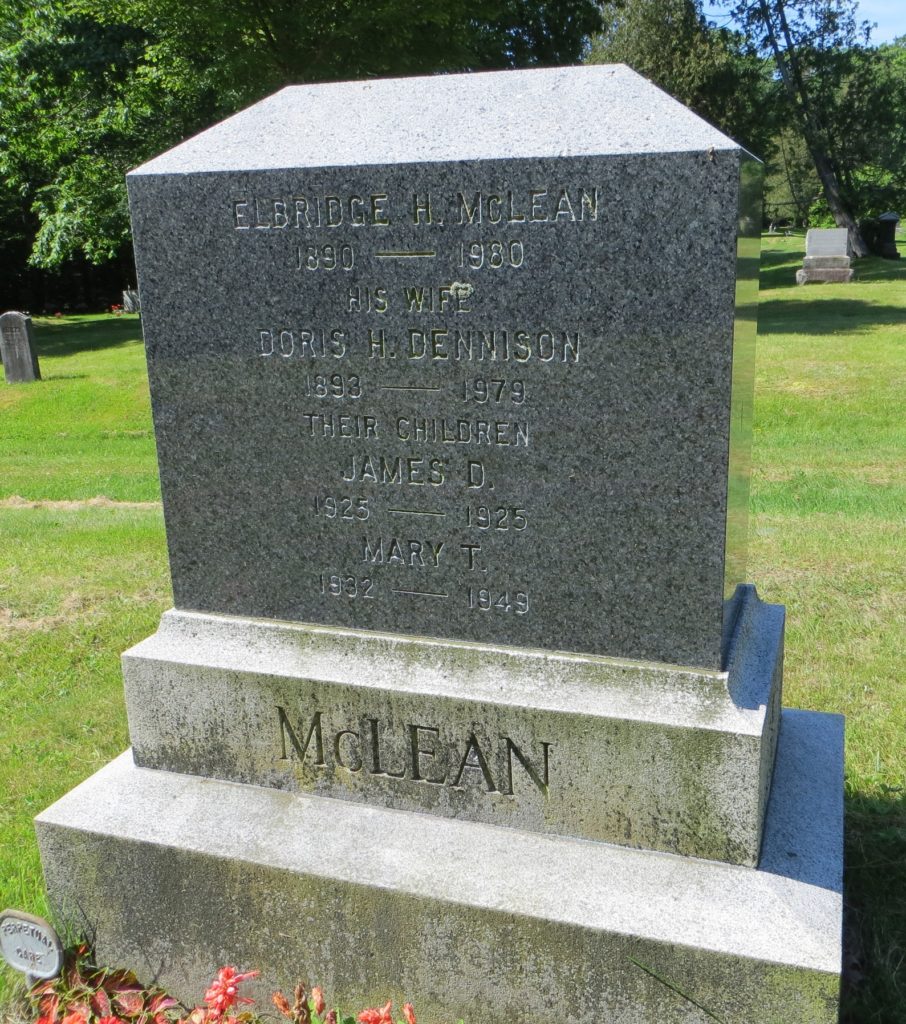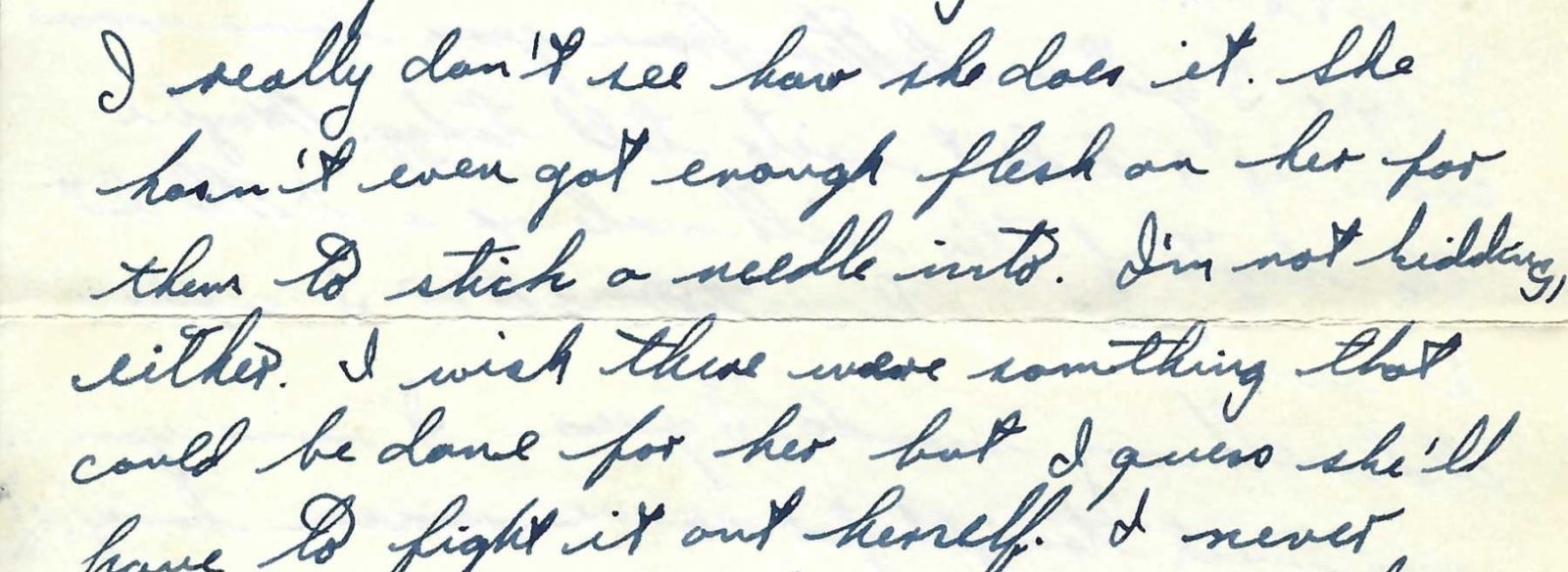In May 1947, doctors diagnosed Jim’s younger sister Mary with Tuberculosis. At the time, she was 15 and a sophomore in high school. She soon moved to the Western Maine Sanatorium in Hebron, a 45-50 mile drive from the family home in Rumford.
“Mary had a great sense of humor, loved people, and was loved by them,” Jim’s older sister Audrey wrote of Mary in a family history. “She played saxophone in the high school band and was popular among her schoolmates.”
Jim writes of a visit with his sister in his March 1, 1948 letter to Thelma.
“I went to see Mary before I came back here Sunday. She just the same as she always was, in talking etc. that is. I really don’t see how she does it. She hasn’t even got enough flesh on her for them to stick a needle into. I’m not kidding, either. I wish there were something that could be done for her but I guess she’ll have to fight it out herself. I never knew T.B. was like that. Most of the people I know that have had it just went away for a while and then got better.”
Jim’s understanding of TB in the late 40s was correct. The disease was once known as consumption for the way the bodies of those who contracted it wasted away. In the late 19th century, about 80% of those individuals who developed active TB died of it. But by the time Mary was diagnosed, fatality rates from the disease were decreasing.
“Rates of death from tuberculosis in the United States decreased from 194 per 100,000 persons in 1900 to 40 per 100,000 persons in 1945, in part because the epidemic of tuberculosis in the western world was running its course and in part because of public health initiatives and improved socioeconomic conditions.”
Audrey wrote about her sister’s ordeal in the family history.
“During her illness, I wrote to her almost every day. She responded with cheerful, heartbreaking letters about her life in the sanatarium. She was the youngest patient there and a favorite of all the staff. Mother visited her almost daily, making the 45-50 miles drive, rain, snow or shine.”
Audrey also wrote about her treatment.
“She had been given penicillin until it no longer helped her. Strepromycin was discovered during the time she had the disease, and for a while it looked as though that was arresting the progress. But it didn’t last.”
“She’s in the section where all the bad cases are taken,” Jim wrote in his letter. “It’s not the best atmosphere for her. She can’t help but wonder about herself I suppose, although she never seems to worry about not getting better. Anyway she’s fooled all the doctors so far. I hope that she can keep it up.”
Audrey returned to Maine for a visit in December 1948.
“I flew home for the holidays…to see Mary. We went over each day, and she was happy and lively to listen to. But it was a shock to see her for the first time since her illness. Her skin was drawn tightly across her bones, and except for her smile and her eyes, she was hard to recognize…She just wasted away.”
Mary passed away from the disease on October 4, 1949.
- Watch the PBS program, “The Forgotten Plague”
- More on the Maine State Sanatorium in Hebron
- 1934 video from the sanitorium.
- Excerpts from the diary of a woman with TB in the 1940s

